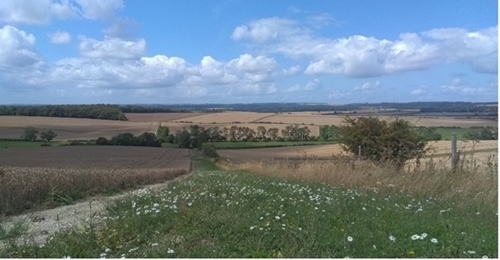
Earlier this year the GWCT policy team was invited to respond to a consultation on Environmental Targets. We feel the 25-year Environmental Plan is ambitious, but it will take focused effort to meet its goals.
Our thoughts were as follows:
A need for the right focus
We are concerned that there are no fish species within the suite of biodiversity targets, particularly as almost all rivers in England have been classified as at risk for a number of years with a clear decline in protected species such as the Atlantic Salmon. Fish such as salmonids are a keystone species critical to river biodiversity, and therefore a good indicator of water quality in both the river and marine environments.
The broad-brush approach of the Farmland Bird Index (FBI) also fails to deliver a detailed consideration of what is happening to our birdlife. The specialist grouping within the FBI, which includes Corn Bunting, Lapwing, Grey Partridge and Yellowhammer, would provide a better indicator of farmland health. Government should also prioritise those red-list species where the UK holds the substantial proportion of the population.
We must also be more nuanced when it comes to tree planting. Open landscapes provide for species preferring more open areas such as skylarks and grey partridges, so the inappropriate application of a tree-planting policy (for example, planting hedgerow trees) could have unintended consequences for these red-listed species.
Proper monitoring
By supporting other data collection surveys, Government would give greater clarity on the reasons for successes or failures. The current species abundance target will only measure change, not the cause of any change and therefore limits the ability to design a blueprint for future success.
There is an absence of individual invertebrate species data. Butterflies and moths are widely recorded but insects that contribute to pollination and pest management services are less widely recorded. The Chick Food Index developed by the GWCT is used by the Pesticide Indicator sub-group as an example of a possible index that could be added to the data analysed. There should be support for specialist data provision from more detailed, localised surveys undertaken by NGOs and other research bodies such as the GWCT’s Sussex study data.
Habitat – just one leg of the stool
Physical habitat alone is not sufficient to recover some species. For example, ground-nesting bird productivity is improved by generalist predation management (as demonstrated by various GWCT projects) whilst farmland birds also benefit from supplementary feeding as evidenced by our Allerton demonstration farm. Data to date suggests that the approach taken in the Entry Level Scheme merely maintained farmland bird numbers whilst Higher Level Scheme options demonstrated a benefit.
Scale matters
It is important to provide targets at the appropriate scale so that the land managers doing the hard work on the ground can see a clear line of sight between what they do and the targets they achieve. This could be at the scale of a farm or a farmer cluster/collaborative group but should also be at the landscape scale. The emphasis on recovery at the national scale does not reward or encourage those whose focus has already been on successful conservation.
Policy needs to focus on what farmers want to deliver
Embracing individual land manager motivations is important in achieving success as more is ‘invested’ in the management and provision of such measures. Designation and prescriptive approaches in contrast achieve the opposite.
We hope that this response helps to shape our future targets in a way that supports farmers and delivers environmental benefits.